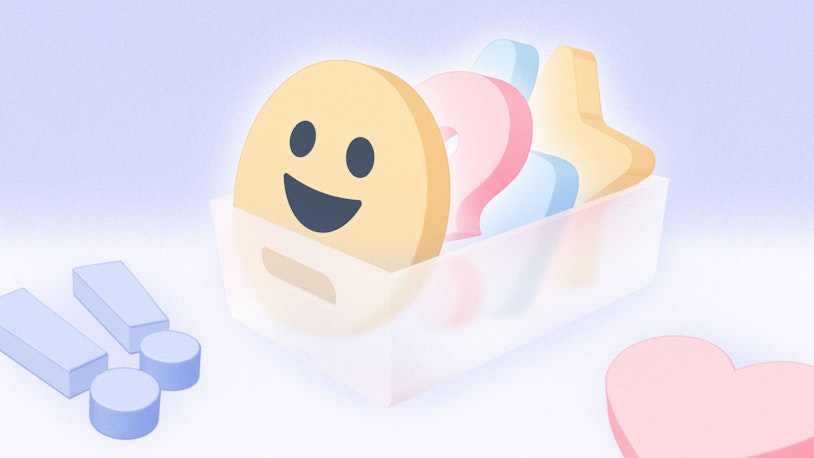Customer experience is a critical competitive advantage for 81% of modern businesses.
Your product makes up much of that experience: how it works, whether it's buggy, if it does what the customer expects. But your customer-facing experience makes up the rest — namely, your sales process and customer service team.
Along with companies identifying these aspects of their businesses as keys to growth, customers have begun recognizing them as necessary, too. In a Microsoft Dynamics study, 95% of consumers indicated that good B2B customer service is vital for them to feel loyal to a company.
It's evident that it's essential to customers and companies, but what is B2B customer service, exactly?
What is B2B customer service?
B2B is short for "business-to-business," meaning that you are a business and the product or tools that you sell are also designed for companies to use, rather than consumers. Customer service is the act of providing timely and empathetic responses to your customers when they are in need.
Some examples of B2B products are:
Dropbox
WeWork
Mailchimp
Help Scout
B2B customer service teams have extra pressure on response time and first contact resolution because B2B customers often rely on a company's product for their business's health.
For instance, if Mailchimp goes down, a company's marketing team couldn't send marketing emails to their customers. If people aren't able to get into WeWork's offices, they wouldn't be able to work for the day.
Beyond that, there's additional complexity in teams that use B2B customer service: Rather than a single point of contact as you might have in other industries, there are typically multiple individuals on different cross-functional teams using B2B products together.
That makes context and customer knowledge extremely important in the context of B2B customer service. There are also generally more people involved in the buying — and thus the customer service — process.
B2B vs. B2C customer service
Whereas B2B is business-to-business, B2C is business-to-consumer. Some examples of B2C businesses are:
Amazon
Netflix
Zappos
Spotify
The price points for B2C products tend to be lower than those of B2B. Given that, the customer service processes on the B2C side can lean more heavily on automation and self-service. Things like a slower response time derail them less.
For B2C companies, a single person purchases and uses the product, but with B2B, multiple cross-functional teams use it. Creating context within those moments, especially because response time is so valuable, is extremely important.
Context is less key in a B2C environment, as most of the issues will be one-off or with the same person each time.
6 B2B customer service best practices
Customer service is one of the critical differentiators for most businesses, so it's essential to knock it out of the park. In the B2B environment, stellar customer service is even more critical:
More people need to be impressed.
The stakes are higher.
Each contract is usually quite valuable.
Here are six tips for creating better context and experience within your B2B customer service strategy.
1. Focus on getting the right answer rather than a fast one
With B2B customers, there are so many moving parts, including multiple points of contact, many areas of interest, and often different technical knowledge levels.
Given that, B2B customer service can also be prone to a ton of back-and-forth. It's essential to cut out as much of that back-and-forth as you can. Each message that delays your customer from getting their answer erodes their trust.
According to Statista, one-third of all consumers consider it most essential to get their problem solved in one interaction, regardless of the amount of time spent.
So as lovely as it can feel to get an almost-immediate response, it's significantly less meaningful if the answer doesn't have a resolution. One million quick responses still add up to a lot of time wasted without a solution. Focus your energy on getting the answer right rather than getting the answer right now.
2. Keep it human where you can
Unlike B2C, where automation and self-service reign, in B2B customer service, the people you're speaking with really want a human connection. Seventy-five percent of consumers still choose to interact with a real person, even if the option to get an answer more quickly via automation exists.
The reason is that human beings have empathy and understanding and are capable of surprising and delighting the people around them. Robots, while efficient, aren’t usually delightful.
So while considering ticket deflection methods and saved replies, try to keep every interaction grounded in humanity:
Use phrasing that feels human in your autoresponders.
Keep your phone functionalities, if you have them, well-staffed to avoid long, automated phone trees.
Find opportunities to use automation that don't interrupt the natural flow of human communication.
For instance, use AI to surface and suggest useful documentation on specific pages of your site. Automation doesn't have to be entirely made up of creepy live chatbots.
3. Invest in excellent phone support
Some consumers prefer the traditional medium of phone calls to reach customer support representatives, but many companies choose their phone functionality as the place where they use the least amount of humans and the most automation.
How many times have you heard a story of someone getting stuck in an awful phone tree waiting to contact customer service? How many times have you personally gotten stuck in a horrible phone tree?
Use this expectation as a way to flip the script. If you're going to offer phone support, staff caring, human people on your phone lines, and try to do away with as much of the horrible automation as you can.
If you do use automation, keep it simple and give your customers a way to quickly reach your support representatives if they need to.
4. Make customer service meaningful internally
The most common complaint of any customer-facing team that I've worked on is that the rest of the company doesn't appreciate or understand its work.
Your B2B customer service team has a better perspective on your customers and their needs than almost anyone else at the business. Beyond that, they work tirelessly every day to ensure that your customers continue to feel cared about.
Give your team the credit it deserves by recognizing meaningful work at a company-wide level. Beyond that, ask your team questions about what customers care about, and listen carefully to their responses.
Companies that have worked to engage employees outperform their competition by 147%. Allow your team to make real impacts on company initiatives, and you'll see their output transform into something much more meaningful and expansive.
There are other financial benefits to this empowerment, too. Companies that provide an emotional connection with customers outperform the sales growth of their competitors by 85%.
It feels good for your customer service team to know they are making meaningful impacts on these initiatives and to feel more connected with your customers.
5. Listen to and implement customer feedback
When a customer offers you constructive insights from an NPS or CSAT survey, how do you respond? Some companies might roll their eyes at the comments that customers leave for them or deem them "ridiculous" or "so out of scope." But even the comments that seem out of this world are worthy of attention.
It's worth noticing: 77% of consumers feel more favorable if a company actively considers and acts on their feedback.
Instead of rolling your eyes at customer insights, try to understand where they are coming from — even the wildest requests have roots in reality. For instance, if someone asks for something far out of the scope of your current product, take time to ask them what they are looking to do with the feature rather than just dismissing it as unrealistic.
Taking the time to dig into and understand these requests has multiple benefits:
Your customers feel heard and understood when you try to dive deeper into their insights. Even if you don't build what they are asking for, they get the sense you are trying to understand it.
You move forward with the product building process much more intentionally. By understanding the underlying motivations behind the requests, you're able to create a more feature-rich product that meets various needs.
Involving customers in the process is especially important in a B2B customer service structure where most of your customers want to feel like partners.
6. Use your data
Data helps you make more informed decisions. Use information about how your customers are using your product, where they are satisfied or dissatisfied, and what they want more of. This information gives you a more holistic awareness of what you need to improve.
There are tons of ways to use data to inform your customer experience, but perhaps the best way to get started is by creating a customer journey map.
A customer journey map helps your B2B customer service team identify and resolve issues proactively, sometimes before your customer even needs to reach out. You identify bottlenecks in processes, problems with your product, and even internal strategies that your team could modify to make things better.
Customer journey maps aren't silver bullets, though. In B2B, the different personas within a buying team can have very different experiences and paths, so you need to consider multiple customer journeys. One size won't fit all there.
Use your data and maps to personalize the customer experience for each of your different user personas. For instance, some users may need information about account management, while it will be extraneous and unnecessary for others.
Things like automated education around new product features or onboarding checklists within your product can help customers feel more connected.
Take care of your customers
While B2B and B2C customers are similar in that they both pay you for your services, the customer service structure between the two is very different. B2B customers need more of your attention and are less inclined to be served through automation or self-service.
When you receive an inquiry, focus on answering correctly rather than immediately. Customers are much more willing to wait a little bit longer for the correct response rather than go back-and-forth for hours over a customer service channel.
Keep it as human as you can — use human language, and avoid crumby automation like poorly designed phone trees.
Internally, focus on empowering your B2B customer service team to make a real impact at a company-wide level. Encourage your team to read through customers' feedback and reach out for clarity wherever possible. Having meaningful conversations with customers will never hurt your strategy.
Take care of your customers, and they'll take care of you. They'll reward you with loyalty, honesty, and continued trust throughout their entire lifecycle — all you have to do is show up for them.




